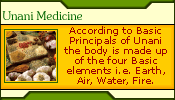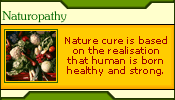|
To understand physiology, pathology and pharmacokinetics of ayurvedic
therapeutics the concept of panchbhoutic siddanth is of vital importance.
Phrithwi, Aapa, Teja, Vayu and Akasha are the five (Pancha) basic
elements that are the constituents of all living matter. Together
these five are called Panchamahabhoota. These five elements are
the building units of every thing, including medicines and living
beings. Depending on the majority of the content, the matter is
classified as Parthiva, Apya, Taijasa, Vayaviya and Akashiya respectively.
The permutation and combination of these elements and its quantum
in a given matter decides its properties. Mahabhoota is the smallest
divisible unit of any matter.
The space without which exixtence of any matter is impossible is
called the Akashamahabhoota that was first evolved from the akasha-tanmatra
(only Akasha element). The Sound (Shabda) is the main sense attribute
and Apratighatatwa (Nonresistance?) is its main property. Next to
evolve from Akashamahabhoota. Sparsha (touch) is Vayumahabhoota
that inherits attribute of Shabda. Chalatwa as its main property.
From Vayumahabhoota the next to evolve is Agnimahabhoota. The main
sense attribute of Agni is Roopa (Vision) and the main property
is Ushnatwa (heat). It also inherits the sense attributes of Shabda
and Sparsha from the earlier Mahabhootas.The next in line to evolve
from Agnimahabhoota is Aapamahabhoota (Jalamahabhoota). Rasa (taste)
is its main sense attribute and Dravatwa (liquidity) is the main
property, along with that inherited from earlier Mahabhoota.
The last to evolve is Prithwimahabhoota. Kharatwa (roughness) is
the main property and Gandha (Smell) is the main sense of this Mahabhoota
along with properties inherited from the earlier once.
All this ayurvedic knowledge of the panchamahabhoota can be summarized
as:
Akasha Shabda Aapratighata
To understand the working of ayurveda as science, the knowledge
about the concept of Panchamahabhoota is very vital. As known from
the readings that aksha is the first element that came into existence
was not a synonym of sky but it can be conceptually similar to the
space. The perspective of Akasha to understand will need greater
consciousness of the time-space universe.
These are the lines from the book "Music of the spheres "
written by Guy Murchie:
" To understand what this fantastic world is all about - to
see its basic pattern and meaning - I must crane my soul to examine
it deeply and, in so far as is possible, independently. I must seek
a perspective far beyond the traditional, beyond the safe and proper,
even beyond the human. When I was a child, I used to think that
little things were simpler than big things. One day wondering in
the woods, I suddenly understood that the smallness off an acron
(Oak seed) may not really make it any simpler than the oak, for
it as surely contains oaks as the oak contains acrons. And ever
since then, whenever space outside our world of sense seems more
important or more impressive than the space within the atom, I can
remind myself that the differences are only relative and almost
certainly as illusionary."
Akasha Mahabhoota
it is believed in ayurveda that Akasha is Anadi and Anant i.e.
it does not have any origin or end and it is sarvavyapi (omnipresent,
ever existent). The only way we can understand Akasha is from its
apratighatatwa guna, which allows very existence of the matter.
As nothing can exist in the absence of space, even the human bodies,
cells and organs have a space to exist. As the outer space is for
our body, our body is for the billions of cells in it. It is believed
that the outer space is made up of nothing but the inner space and
thus proving the sarvavyapakatwa of this basic element Akasha. Aksha
has shabda (sound) as the sense attribute. Shabda is the very basic
form of energy, which is also ever existent as Akasha.
As the theory of Eienstine states that "The energy can neither
be created nor destroyed but can be changed from one form to another
and that matter is nothing but a form of energy (E= MC) energy can
not exist without matter and vice verse. In the Akashamahabhoota
energy exists in the form of Shabda.
According to Hindu philosophy, "AUM" was the first Shabda
to exist and from it the Universe evolved. Together many shabda
constitute a mantra, which is a repetition of group of shabda or
a specific energy-field. Inspite of mantra, mani and aushadhi being
the basic forms of treatment in ayurveda, mantra chikitsa is given
first preference as it is believed that it is Daivi (divine) form
of treatment. The Second being Mani Chikitsa (gems) and the third,
which is most widely used is Aushadhi-Chikitsa (medicine).
Vayu Shabda, Sparsha Sparsha Chala
Vayu Mahabhoota stands next in the hierarchy of creation. The concept
of this Vayu Mahabhoota makes us realize that the movement from
apratighatatwa or nothingness of Akasha to sense of touch (sparsha)
or feeling of something is the sense attribute of this Mahabhoota.
Apart from this it also carries the sense attribute of sound (shabda)
and thus the creation if felt but not seen.
The basic property of this mahabhoota is the movement or chalatwa
logically anything that moves or transported does so because of
this Mahabhoota. In living beings this Mahabhoota is a major constituent
of Vata dosha which is responsible for movements like that of motor
or sensory nerve impulses, food through G.I.T, movements of the
joints etc.
Agni Shabda, Sparsha, Roopa,Sparsha, Roopa
Ushna
Next is Agni Mahaboota after Vayu Mahabhoota, which has the vision
(Roopa) as its sense attribute and warmth (Ushnatwa) as its main
property. This helps in viewing the creation in life. In living
beings Agni Mahabhoota is the major constituent of biological humor
Pitta dosha. Agni provides the energy necessary for all activities
in our body and can be utilized by our cells. As long as this Agni
is proper, all the activities in body are carried out smoothly.
Any disturbance in this Agni causes imbalance in the homeostasis
(equilibrium) and disturbs physiology.
Entire Ayurvedic therapeutics is based on this concept of Agni.
The branch of Ayurved which deals with internal medicine and treatment
is called "Kayachikitsa", where Kaya means Agni and Chikitsa
means treatment.
Aapa (Jala) Shabda, Sparsha, Roopa, Rasa
Drava
Next to agni is Aapa (jala) Mahabhoota. Its main sense attribute
is the sense of sense of taste (rasa). and liquidity (Dravatwa)
is the basic property. Biological humors main constituent is aapa
and bringing and keeping two or more things together is possible
because of this Mahabhoota. Theoretically The cells of organs, particles
of herbs and minerals are kept together by this Mahabhoota as all
the biological, chemical and bio-chemical bonds are possible because
of this Mahabhoota.
Prithwi Shabda, Sparsha, Roopa, Rasa,
Gandha Khara
This mahabhoota evolves last in the series. Its main sense attrinute
is the sense of smell and its main property is Kharatwa (roughness).
All these are the basic building blocks of creation. With the help
of these simple building blocks the entire complicated universe
with its living and non-living matter is created.
In ayurveda besides these panchamahabhoota the Dik (disha, direction),
Kala (time), Atma (Soul) and Mana (psyche) are also considered responsible
for the creation of living beings.
Panchbhautic Chikitsa Siddhant
Ayurveda believes that all matter in the universe including medicines
are made up of Panchmahabhoota, i.e. Akasha, Vayu, Agni, Jala and
Prithvi. At the sam time ayurveda also believes in living beings
are made up of Dosha, Dhatu and Mala also.
To maintain health the homeostasis of the constituent panchamahabhoota
is important. Deviation from the basic constitution (prakruti) leads
to disease (vikruti) and to bring back prakruti from vikruti what
is required are active efforts in the form of chikitsa (medication).
|









